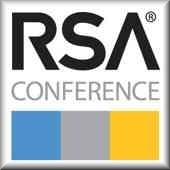Is The Hypervisor Security’s Goldilocks Zone
Over the last several years, there’s been much attention spent at security events on handwringing over the security risks of cloud and virtualization adoption in the enterprise. The upcoming sessions at RSA will be no exception, but one security researcher with VMware will be turning the theme on its head. He’s got a talk planned on how the fundamental technology around virtualization and cloud could actually hold the key to solving a lot of security’s architectural problems.
“If you look at security spend, it outpaces IT spend already. And then the only thing that outpaces security spend is security losses,” says Martin Casado, CTO of networking for VMware. “We continue to fight a losing battle and it’s pretty clear that we can’t spend our way out of this. So this suggests to me as a technologist that there’s an architectural problem.”
Known most for creating OpenFlow and for his work pushing the software-defined networking movement forward—he was awarded the 2012 Grace Murray Hopper Award by the Association for Computing Machinery for that—Casado actually has his technology roots in security. Prior to his post graduate work at Stanford, he spent nearly six years working for the Lawrence Livermore National Laboratory, with a good of his time spent on security. So it’s a return to a comfort zone now as he’s dedicated the past half year thinking deeply about how virtualization fits into the security ecosystem.
On Monday he’ll be presenting with his colleague Tom Corn, vice president of security strategy at VMware, the concept of how virtualization and the hypervisor can actually be a security practitioner’s best friend, rather than something to be feared. His theories revolve around isolation, context and a thing he likes to call ‘The Goldilocks Zone.’
According to Casado, the architectural problem inherent with a lot of security’s ills today are due to the fact that the industry lacks an ‘ubiquitous horizontal layer ‘ to implement security. Instead, today’s security products end up in places that don’t do the full job necessary. In many cases, it’s either lumped into the physical infrastructure or into the host layer, he says.
 Click here for more articles about the RSA Conference.
Click here for more articles about the RSA Conference.
The problem with security built into physical infrastructure is one of context.
“The great thing about putting security in the infrastructure is that you’re isolated. So if the end host gets attacked or gets compromised, then that attack cannot turn off the security controls. That’s good,” he says. “What is bad is you have effectively no context at all. So I had a security policy that was something like, oh, Martin shouldn’t be accessing data X at time Y, you can’t really do this with firewalls or with ACLs because they have no idea about who Martin is and they have no idea about the data.”
On the flip side, host security has got that context available to it but falls short with isolation.
“You’ve got all of the context you need. You’ve got agents running in there. You’re instrumenting the application. You know everything. You know users. You know the data that they’re accessing. You know what files they have. You have the high level semantics,” he says. “But the problem is you have absolutely no isolation. Now you’re effectively putting your security controls in an untrusted entity. So it’s like taking the on/off switch for an alarm system and putting it on the outside of a house.”
Meantime, at the same time we fight this problem of a lack of a horizontal layer for security, cloud is creating one of the biggest business tech transformations of a generation, with virtualization as a core component of that. And even as consolidation has scared security practitioners at the risk, technologists have overlooked the potential that virtualization can have in reengineering security
That’s because the hypervisor has the potential to be the proverbial Goldilocks Zone for security products. It’s got just the right amount of context and isolation to make things work.
“It’s a horizontal layer we can use to implement security services. The hypervisor is close enough to the application to get real context. But it’s far enough away to get real meaningful isolation,” he says, explaining that the hypervisor can be leveraged to look into the guest, the operating system, and the application to pull out meaningful context. “You can look at data, you can look at processes, you can look at threads. You can look at users on a machine and you can extract that information in a secure way. And then that information can be used and enforced within the hypervisor in a way that can’t be turned off because it’s isolated.”
According to Casado, what he’s putting forward is not a proprietary development where VMware is looking to compete in the security market. Instead, the idea he promotes is for security vendors to start using the virtualization layer as a platform to enhance their offerings.
“The idea is to provide a secure platform where third parties can pull out context and to have security controls enforced within the infrastructure,” he says.
Not only are context and isolation a big factor, but so is the ubiquity of the hypervisor. And, Casado says, this isn’t just applicable to the VMware platform, either.
“This is a general statement about the hypervisor. I think this gives us an opportunity as an industry to formalize this concept and say, we already have this horizontal security layer. We have it. Let’s use it. Let’s take advantage of it and let’s actually improve things in a significant way,” he says.
Have a comment on this story? Please click “Add Your Comment” below. If you’d like to contact Dark Reading’s editors directly, send us a message.
Article source: http://www.darkreading.com/perimeter/is-the-hypervisor-securitys-goldilocks-z/240166275